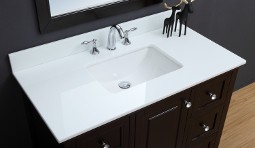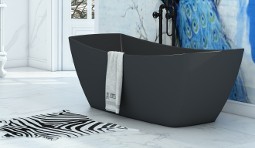
The vast majority of clogged drains can be solved by using some fairly simple methods and tools.
Once unclogged, you should work on preventing or reducing the chances of it happening again -see suggestions at the end of this post.
8 Ways to Unclog a Shower Drain
- Pour boiling water down the drain.
- Try using a plunger.
- Use baking soda and vinegar (the natural alternative to chemicals)!
- Take the drain cover off and pull out the clog by hand.
- Use a hook.
- Use a plumbers’ snake (also sometimes called a "toilet jack" or an "electric eel").
- Use chemicals.
- Call a plumber.
I'll go into each of these methods in detail below. The easiest and lowest cost methods are discussed first followed by the more involved and expensive ideas. (The only exception to this order is perhaps the chemical option, which is quick, easy, and affordable, but can cause some damage to your pipes, especially if done repeatedly.)
In my experience, unclogging a shower drain often requires a combination of more than one of these methods.
1. Pour Boiling Water Down the Drain
This can sometimes break down the soap or grease that is holding the clog together and clear the blockage.
Used on its own, this method may not work, especially if you are dealing with a serious blockage that contains a lot of matted hair and has built up over time. However, it may partially clear the blockage and work fully when used in conjunction with one of the other methods.
2. Use a Plunger
The nature of the blockage, where the clog is in the drain, and the design of your drain will determine how successful plunging will be. If the clog is deep and made of hair, for instance, you might struggle to get enough suction for plunging to be effective.
You can try adding petroleum jelly to the edge of the suction pad to get a better seal and also adding water so that the end of the plunger is submerged, if it isn’t already.
3. Baking Soda and Vinegar (the Natural Alternative to Chemicals)
This is a more natural solution than using cleaning chemicals. Pour a cup of baking soda down the drain, wait for a few minutes, then pour a cup of vinegar down too.
Wait for a couple of hours to see if the hair clog gets dissolved, then clean out the drain by pouring boiling water down it.
Although this method is ecologically preferable and won't cause damage to plastic pipes, you may still end up having to resort to chemicals.
4. Take off the Drain Cover and Pull out the Clog by Hand
This method has a fairly good chance of success, but it involves using your hands, so wear rubber gloves.
First you need to remove the drain cover. Sometimes there is a screw in the middle that you have to take out. Other times you can pry the drain cover off using a screwdriver.
Look inside the drain and locate the clog. Use a flashlight, if necessary. If the clog is within reach, pull it out with your fingers.
5. Use a Hook
If you can’t reach the blockage by hand, then try fishing out the clog with a piece of wire.
You can improvise a tool with a wire coat hanger, fashioning a hook at the end of it.
6. Use a Plumbers’ Snake (aka a "Toilet Jack" or an "Electric Eel")
Push the snake down the drain until you reach the clog. Turn the snake’s handle and bring it back up. Run water to test the drain and verify that the clog is entirely removed.
7. Use Chemicals
Most hardware stores and supermarkets sell strong chemical cleaners designed to unblock drains. Follow the instructions carefully. Don’t resort to chemicals lightly, as they can cause damage to your drainage pipes, especially if you use this method repeatedly.
Safety Tips When Using Chemical Cleaners:
- Follow directions on product
- Don’t look down drain after pouring
- Wear safety goggles and gloves
- Never mix different chemicals
- Never use a plunger when chemical has been poured down drain
8. Call a Plumber
When all else fails call a professional plumber. It’s the expensive option but likely the one with the least trouble.
What Causes a Drain to Become Clogged?
A clogged drain is usually caused by a lump of knotted hair, dirt, grease, and/or soap. The hair is often wrapped around parts of the drain and therefore can be difficult to move.
How to Prevent Future Clogs
Prevention is almost always better than cure, of course, so don't forget to minimize the chances of your drain getting clogged again. You should certainly consider buying a drain protector if you haven't already got one, to catch hair and other things from clogging the drain.
A secure soap dish can help too, as soap can help to create clogs by sticking knots of hair together into larger clumps.
Source: https://dengarden.com/cleaning/How-to-clear-a-clogged-shower-drain-8-methods-to-try

































